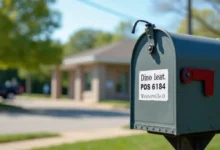Maui Fire Map: A Complete Guide to Tracking Wildfires in Maui

Wildfires have become a recurring threat in Hawaii, and Maui in particular has faced devastating blazes in recent years. Whether you are a resident concerned about safety, a visitor planning a trip, or simply someone looking to understand the island’s vulnerability, the [maui fire map] is an essential tool.
In this comprehensive guide, we’ll explore what the Maui fire map is, how to use it, why it matters, and how it can help communities stay safe. From real-time updates to historical context, this article will give you everything you need to know.
What Is the Maui Fire Map?
The [maui fire map] is a digital tool that tracks the spread, containment, and impact of wildfires across the island of Maui. It provides real-time data sourced from government agencies, satellite imagery, and local fire departments.
This map allows residents and visitors to:
- Identify active fire zones
- See evacuation areas
- Track containment progress
- Monitor weather conditions that affect wildfire spread
For a place as geographically diverse as Maui—with dry leeward plains, lush rainforests, and coastal towns—the fire map plays a critical role in ensuring public awareness and safety.
Why the Maui Fire Map Matters
Maui is not immune to the increasing global threat of wildfires. Dry conditions, high winds, and invasive grasses all create a perfect storm for fire outbreaks. In August 2023, the devastating Lahaina fire tragically demonstrated how quickly flames can consume communities.
The [maui fire map] helps mitigate these risks by providing:
- Early warnings for evacuation zones
- Safe route planning for residents and tourists
- Accurate updates to prevent misinformation
- Historical records for disaster analysis and future planning
Without such tools, communities are left vulnerable, relying only on word-of-mouth or delayed news reports.
How to Access the Latest Maui Fire Map
You can find the official Maui fire map through multiple reliable sources:
- Hawaiʻi Emergency Management Agency (HIEMA) – Offers a statewide live fire dashboard.
- Maui County Website – Shares localized evacuation zones and fire updates.
- Maui Recovers Portal – Provides post-disaster fire extent and recovery data.
- Satellite Imagery Tools like NASA FIRMS – Tracks heat signatures and hotspots.
For day-to-day safety, residents are encouraged to bookmark the county’s official [maui fire map] page and sign up for SMS alerts.
Key Features of the Maui Fire Map
The map is more than just dots and lines—it’s a comprehensive visual safety tool. Some features include:
- Active Fire Perimeters – Showing the boundaries of current wildfires.
- Evacuation Zones – Color-coded areas indicating mandatory or voluntary evacuations.
- Hotspot Detection – Satellite data that marks potential flare-ups.
- Wind and Weather Overlays – To predict possible fire spread.
- Containment Updates – Indicating what percentage of the fire is controlled.
These features make the [maui fire map] an indispensable part of wildfire awareness.
Historical Wildfires in Maui and the Role of Fire Maps
Maui’s history with wildfires highlights why tracking tools are essential.
- 2023 Lahaina Fire: Destroyed thousands of homes, claimed over 100 lives, and left scars still visible today.
- 2021 Olinda & Kula Fires: Burned hundreds of acres in Upcountry Maui.
- Earlier Fires in Kahikinui and Kihei: Show that even remote and rural areas are not safe.
The [maui fire map] was heavily relied upon during these crises to coordinate evacuations and keep the public informed
How to Read and Interpret the Map
For first-time users, fire maps can look overwhelming. Here’s how to simplify it:
- Red Zones = Active fires
- Orange/Yellow Zones = Containment areas or reduced fire activity
- Blue Lines = Evacuation routes
- Icons/Markers = Shelters, road closures, or command posts
By learning how to interpret these symbols, anyone can use the Maui fire map effectively.
Emergency Preparedness Using the Maui Fire Map
Having access to a map is only half the battle. Here are practical steps you can take:
- Set Alerts – Subscribe to emergency text alerts tied to the [maui fire map].
- Know Your Zone – Use county evacuation maps to identify your nearest safe area.
- Create a Go-Bag – Essential supplies for 72 hours (water, food, meds, documents).
- Plan Routes – Familiarize yourself with at least 2 exit strategies.
- Stay Updated – Cross-check fire maps with official social media accounts.
Technology Behind the Maui Fire Map
The [maui fire map] isn’t just hand-drawn—it uses advanced tech:
- GIS Systems – Geographic Information Systems for layering fire, weather, and population data.
- Remote Sensing – Satellites and drones to capture fire perimeters.
- AI Predictive Models – Estimate fire behavior based on wind, dryness, and fuel loads.
- Crowdsourced Data – Residents can sometimes report smoke sightings via apps.
This combination of technology ensures accuracy and timeliness.
Environmental and Community Impact of Maui Wildfires
Wildfires in Maui are more than a temporary disaster; they reshape the ecosystem and community life.
- Ecological Loss: Native forests replaced by invasive grasses.
- Community Trauma: Lahaina residents still face displacement.
- Marine Damage: Ash and runoff pollute coral reefs.
- Economic Impact: Tourism slows, local businesses struggle.
By overlaying environmental data with fire data, the Maui fire map helps researchers and policymakers make informed decisions.
Future Improvements for the Maui Fire Map
Experts suggest that future versions of the [maui fire map] may include:
- Real-time evacuation notifications via mobile apps
- Augmented reality overlays for first responders
- Crowdsourced smoke reporting systems
- Integration with weather forecasting AI
These improvements will make the Maui fire map even more responsive and life-saving.
Conclusion
The [maui fire map] is more than just a map—it’s a lifeline for the people of Maui. From providing real-time fire updates to guiding evacuation plans and helping with long-term recovery, this tool is essential in a world where wildfires are becoming more frequent and dangerous.





